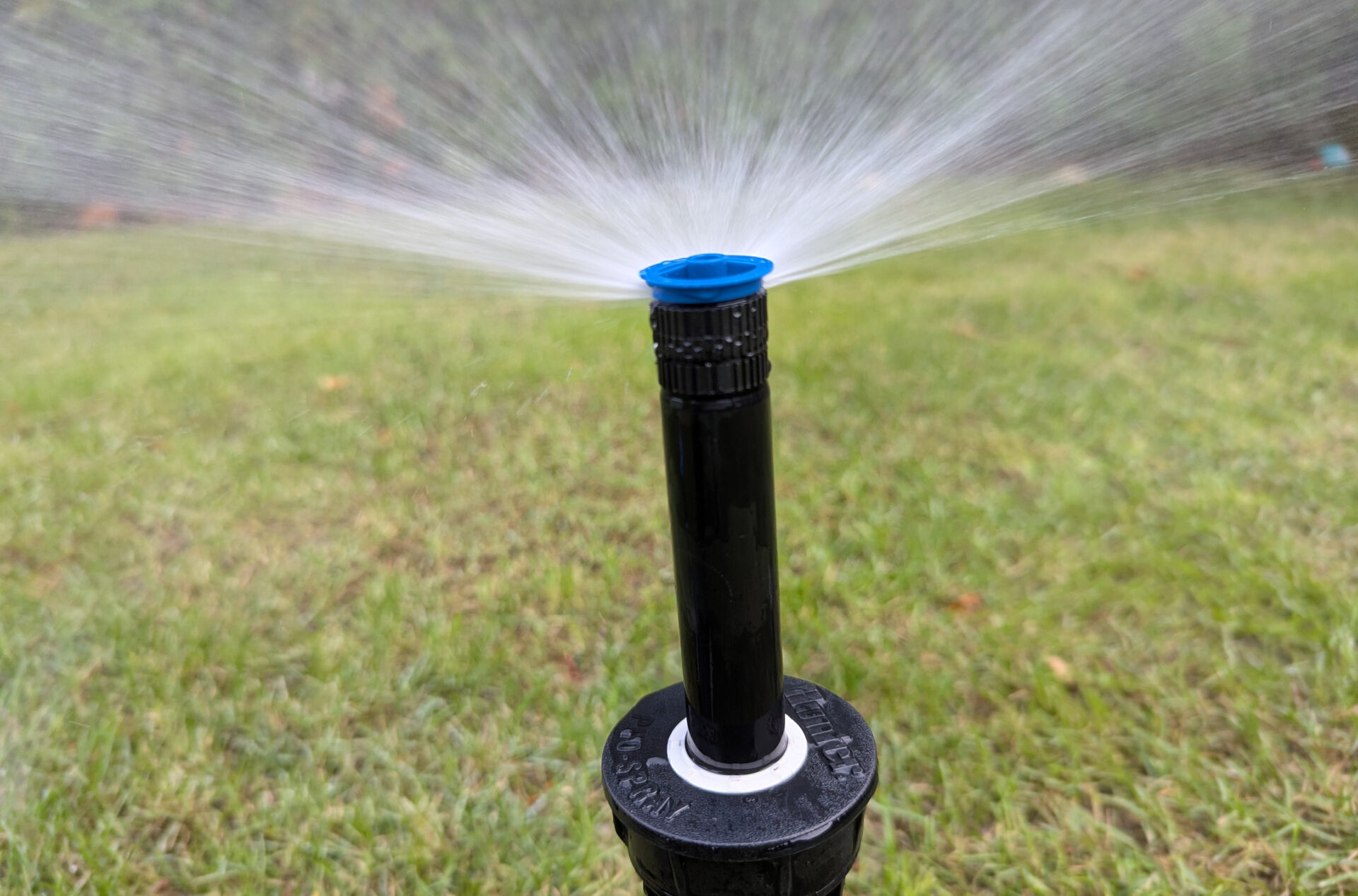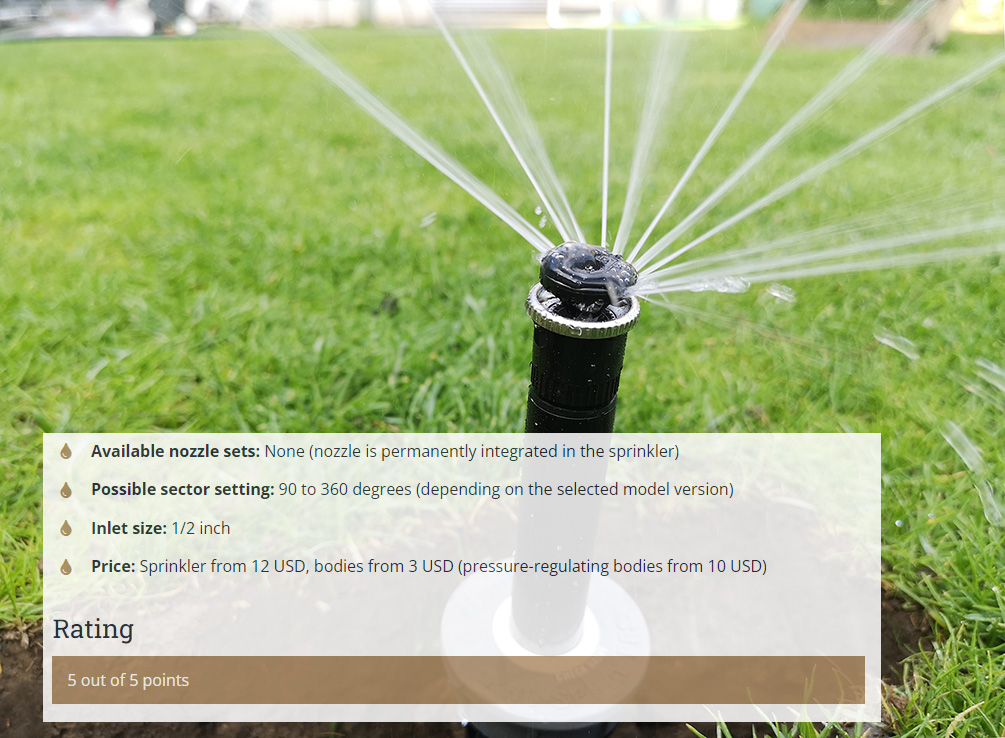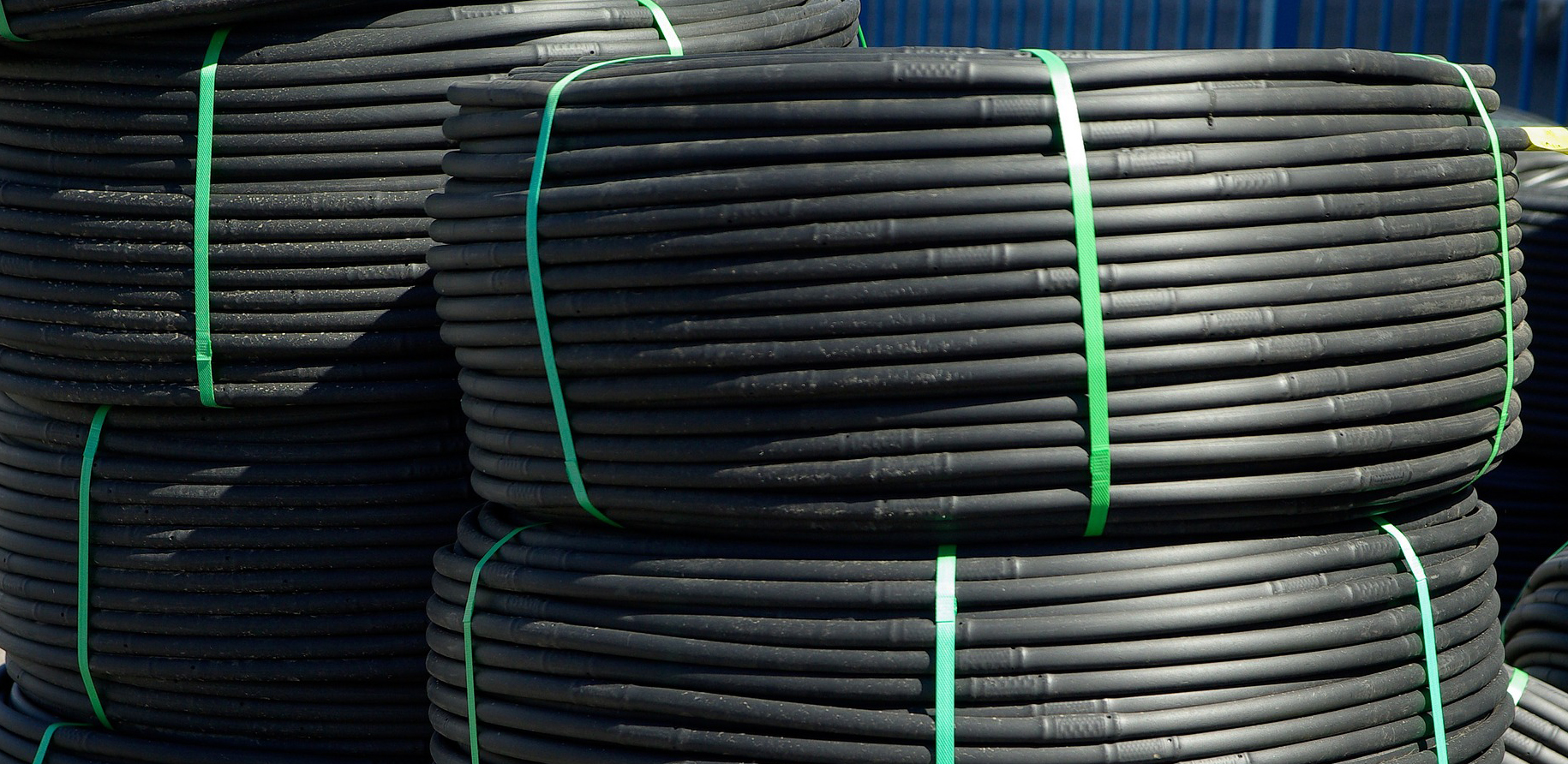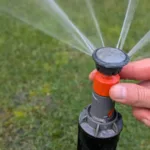A handful of different sprinkler types are available on the market, each with different uses, strengths, and weaknesses. Below is an overview and brief explanation of how each type of sprinkler works and what it is suitable for.
Based on the basic functionality of the sprinkler, sprinklers can be divided into the following groups:
- Gear-driven sprinklers
- Sprayers
- Rotating sprayers (Rotators)
- Oscillating sprinklers
- Impact sprinklers
Description of the different sprinkler types
Gear-driven sprinklers
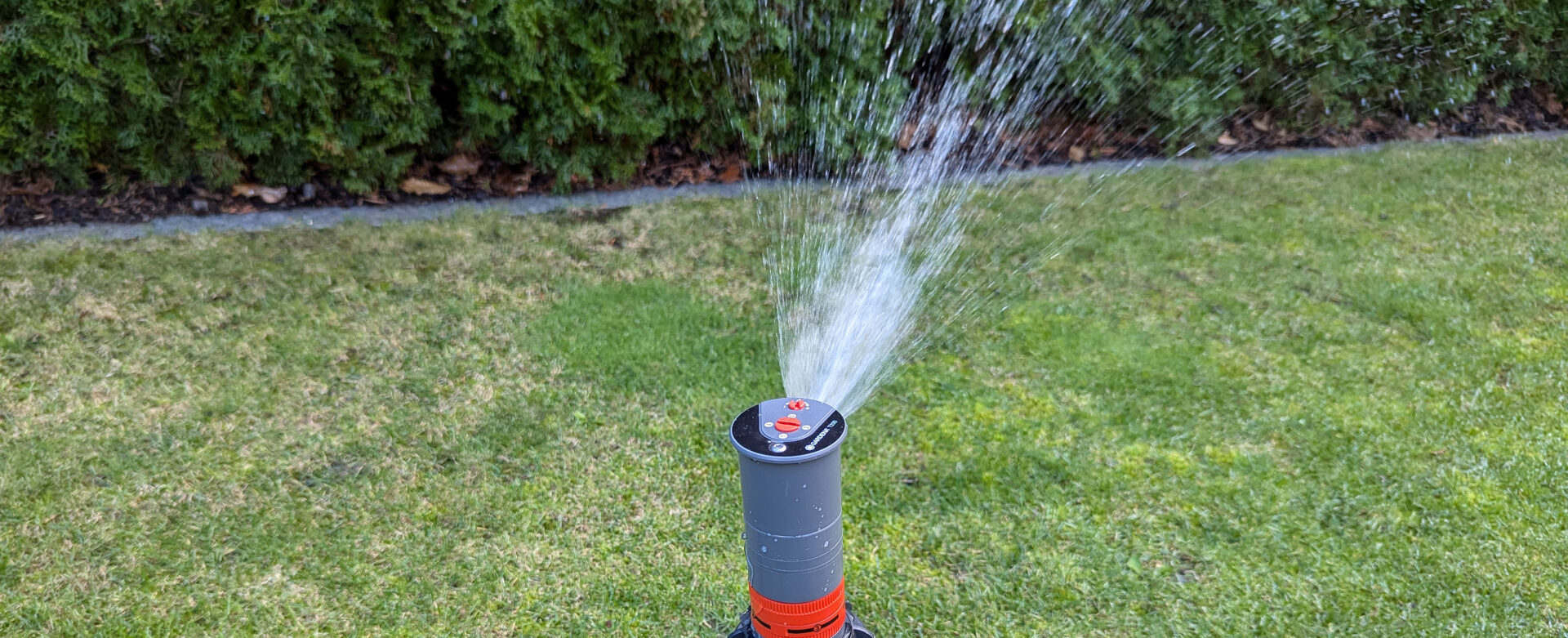
Water pressure drives a gear inside the sprinkler, causing it to rotate in a circular motion. The sprinkler rotates to a certain stop point and then returns to its starting point. The water is released in a relatively concentrated stream.
Gear-driven sprinklers have a comparatively long throw and are suitable for irrigating medium to large areas.
Sprayers
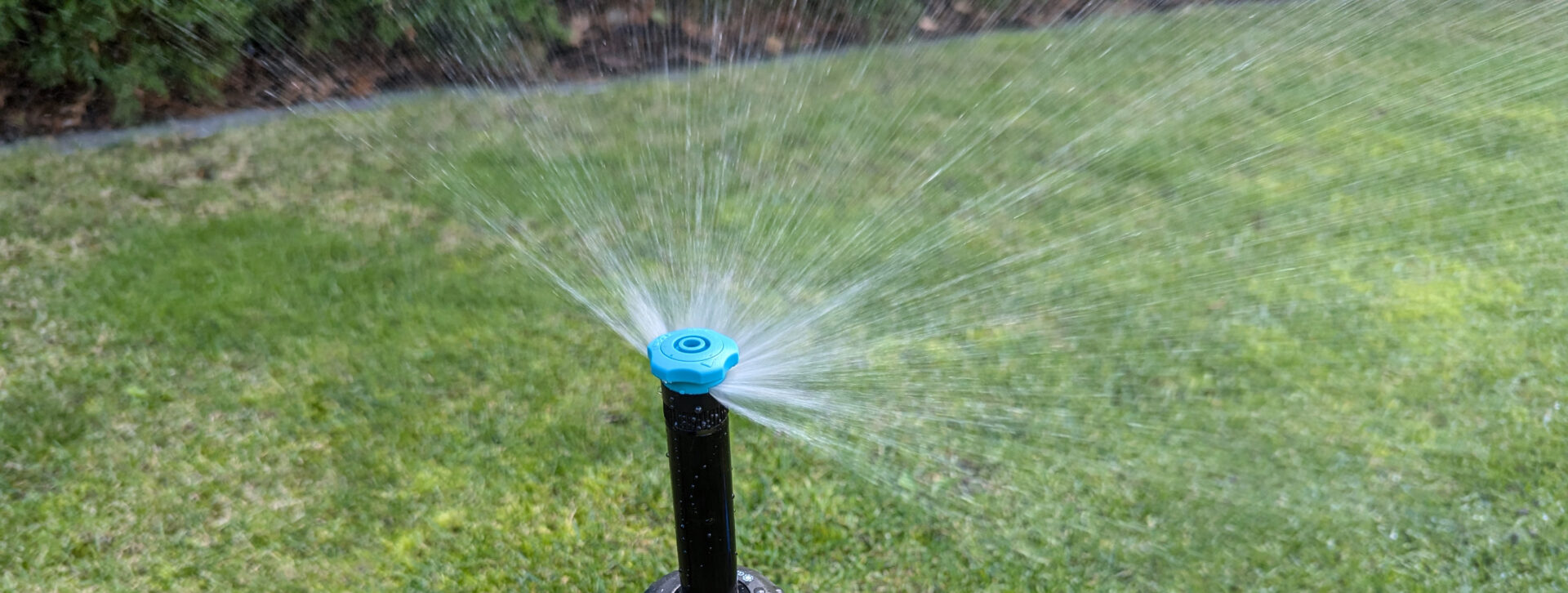
Sprayers do not rotate; they are fixed. Water pressure causes water to spray through an opening in the nozzle in a fan-shaped pattern. The nozzle opening can be enlarged or reduced on most models, allowing the section of the circle to be irrigated to be adjusted. The water is released relatively gently.
Spray sprinklers have a short throw and are used for targeted irrigation of smaller areas, areas with complex contours, or for irrigating more sensitive areas such as flowerbeds.
Rotating Sprayers (Rotators)
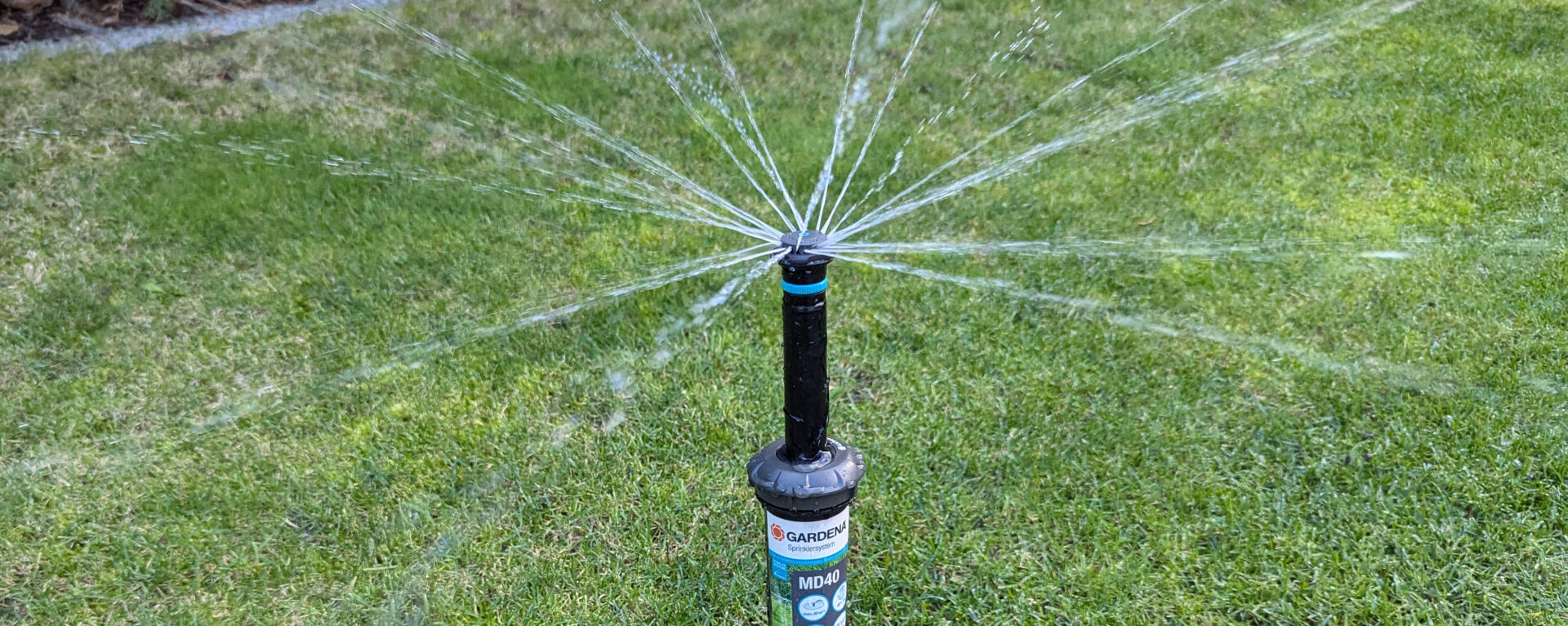
Rotators are a hybrid of a gear-driven sprinkler and a sprayer. Like a sprayer, the sprinkler itself does not move; only the small nozzle on the sprinkler head rotates, ensuring that the water is divided into numerous small jets.
Rotators allow for greater throws than sprayers, but smaller ones than gear-driven sprinklers. They are very versatile and can be used to irrigate small to large areas.
Oscillating Sprinklers
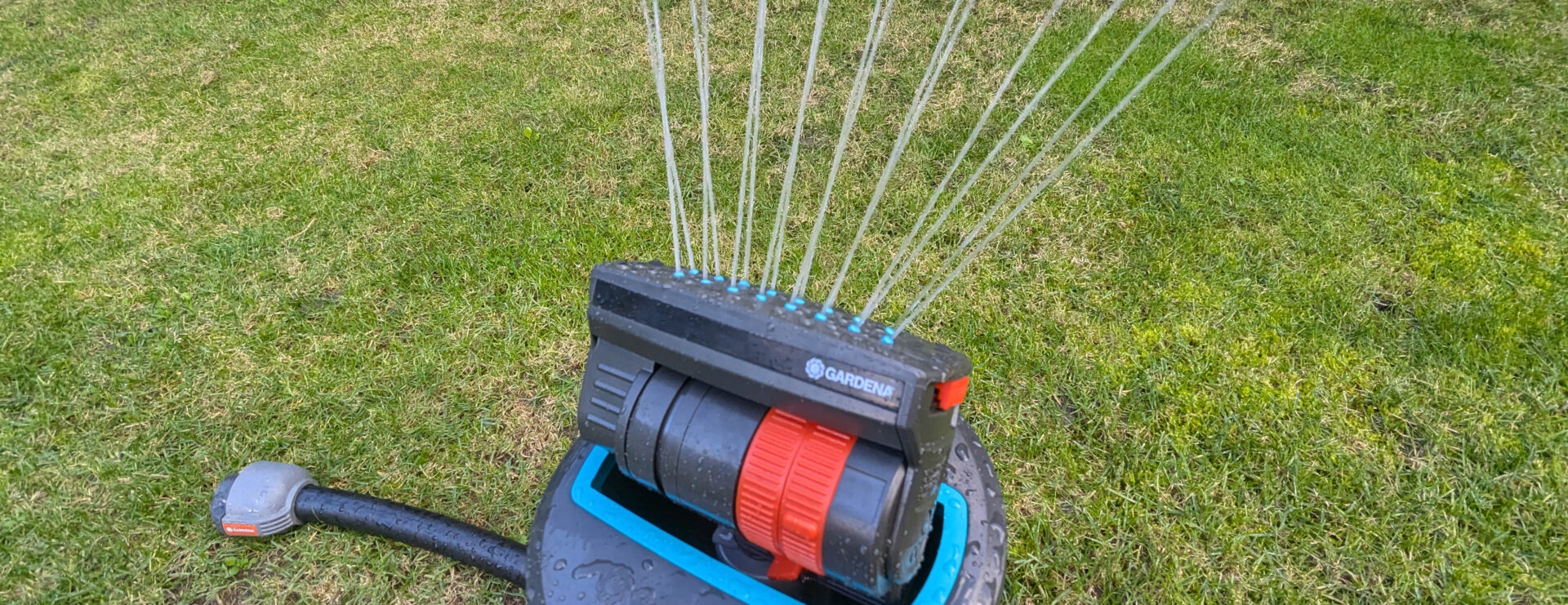
Water pressure moves a pivoting arm with nozzles mounted on it in one direction and then back in the opposite direction. Water sprays from the nozzles in fine jets. The water is thus distributed approximately in a rectangular shape, which is why oscillating sprinklers are often referred to as rectangular sprinklers.
Oscillating sprinklers allow for long throw distances, comparable to those of gear-driven sprinklers. They are usually used as simple, non-submersible irrigation solutions installed on the surface, but Gardena also offers a submersible model, the OS-140*. Oscillating sprinklers are relatively susceptible to wind due to their high throw.
Impact Sprinkler
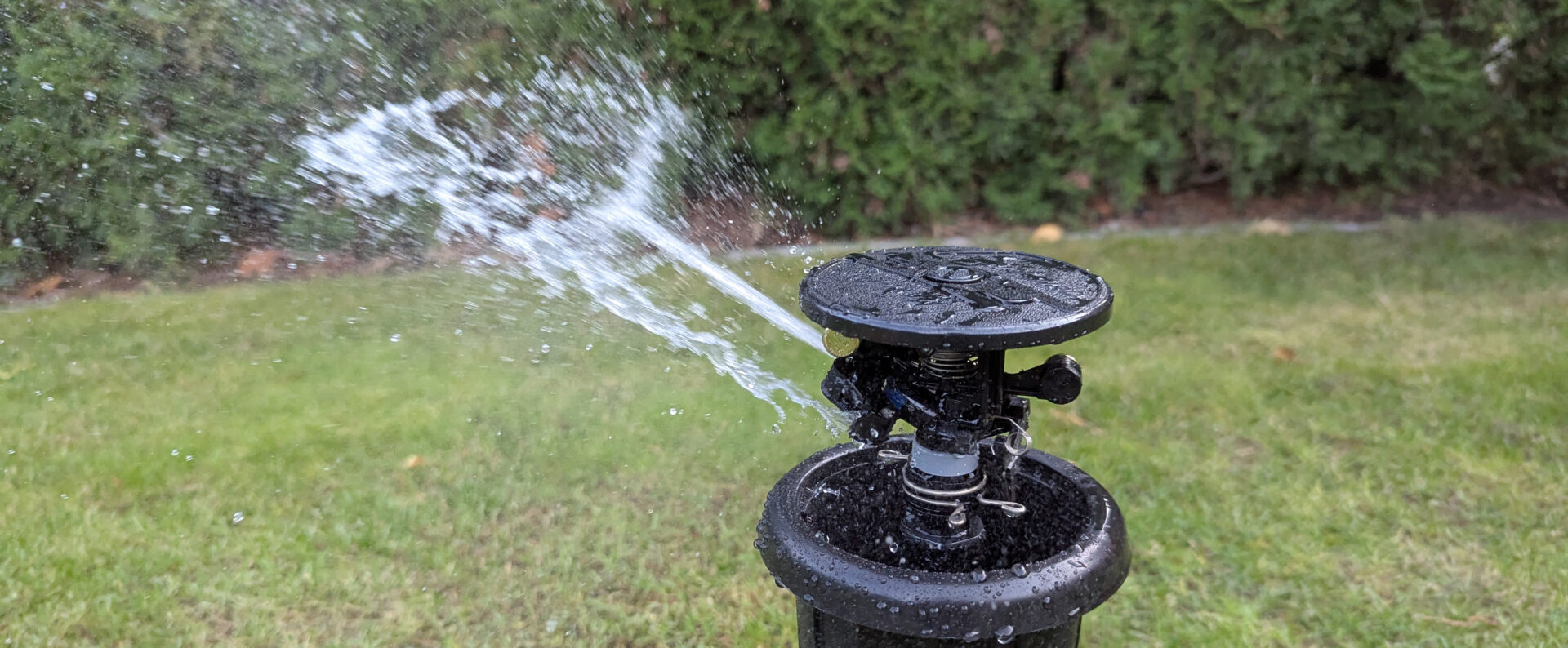
Also called impulse sprinkler, the impact sprinkler is the classic sprinkler type that was used everywhere in the past.. It is now rarely used in gardens but is still very common in agriculture.
Water pressure causes water to shoot through the sprinkler nozzle, deflecting the jet separator located in the stream. This spring then swings back, rotating the sprinkler slightly further, causing the sprinkler to rotate in a circular motion. The deflection of the jet by the jet separator also ensures a wide distribution of the water and creates a rather loud noise. This is one of the main reasons why this type of sprinkler is rarely used in private gardens today.
This type of sprinkler achieves the greatest throw distances. It is usually mounted above ground on a tripod, but Rain Bird also offers the retractable version shown here (Rain Bird Maxi-Paw*).
In addition to their functionality, there are other criteria by which sprinklers can be differentiated. These are often mistakenly confused with the basic sprinkler types listed above, but they are not separate types. Rather, they describe certain characteristics of the sprinklers that apply not only to one sprinkler type, but often to several sprinkler types.
Spray Pattern Shape
According to the shape of the area irrigated by the sprinkler, sprinklers can be divided as follows:
Circular Sprinklers
This is the most common type today. This group includes gear-driven sprinklers, sprayers, rotators, and impulse sprinklers. Depending on the model chosen, they can be used to irrigate a full circle, a semicircle, or another predefined circular sector. Some models have a fixed circular sector, while others allow it to be flexibly adjusted as needed.
Rectangular Sprinklers
This group includes oscillating sprinklers, which always irrigate a rectangular area due to their technical functionality. Rotators and sprayers are also available with special nozzles that create a rectangular spray pattern. These nozzles are used to irrigate narrow strips of lawn, which is why they are also called strip sprinklers. None of the rectangular sprinklers is capable of irrigating a perfectly rectangular area; the irrigated area is always only approximately rectangular.
Sprinkler Visibility
Sprinklers can be visible either all the time or only during irrigation.
Pop-Up Sprinklers
They are installed underground, making them virtually invisible in the garden outside of watering times. When irrigation begins, the water pressure causes the sprinkler head to rise, usually 4 to 6 inches above ground level, depending on the sprinkler model. When irrigation ends, the sprinkler head retracts back into the housing, and the sprinkler cap sits flush, slightly above ground level.
Non-retractable Sprinklers
Non-retractable sprinklers remain permanently on the surface. Typically, these are not connected to the irrigation system via an underground pipeline like retractable sprinklers, but are connected above ground via a hose. These sprinklers are an alternative if you want to set up irrigation with very little installation effort. The exception to this is special professional standpipe sprinklers (shrub sprinklers), which are connected to an underground pipeline but are deliberately used to achieve irrigation from a greater height.
Type of Installation
In-ground or on-ground
In most applications, sprinklers are positioned vertically on the ground or extend out of the ground and project or spray the water in an arc.
Upside down Installation
However, there are also applications where the sprinklers are positioned upside down and rain downwards. These include, for example, irrigation solutions for greenhouses or agricultural watering carts that are pulled across the field and irrigate in strips with the nozzles attached to them. The spray mist solutions used for cooling in cafes or on private terraces also usually spray from top to bottom.

